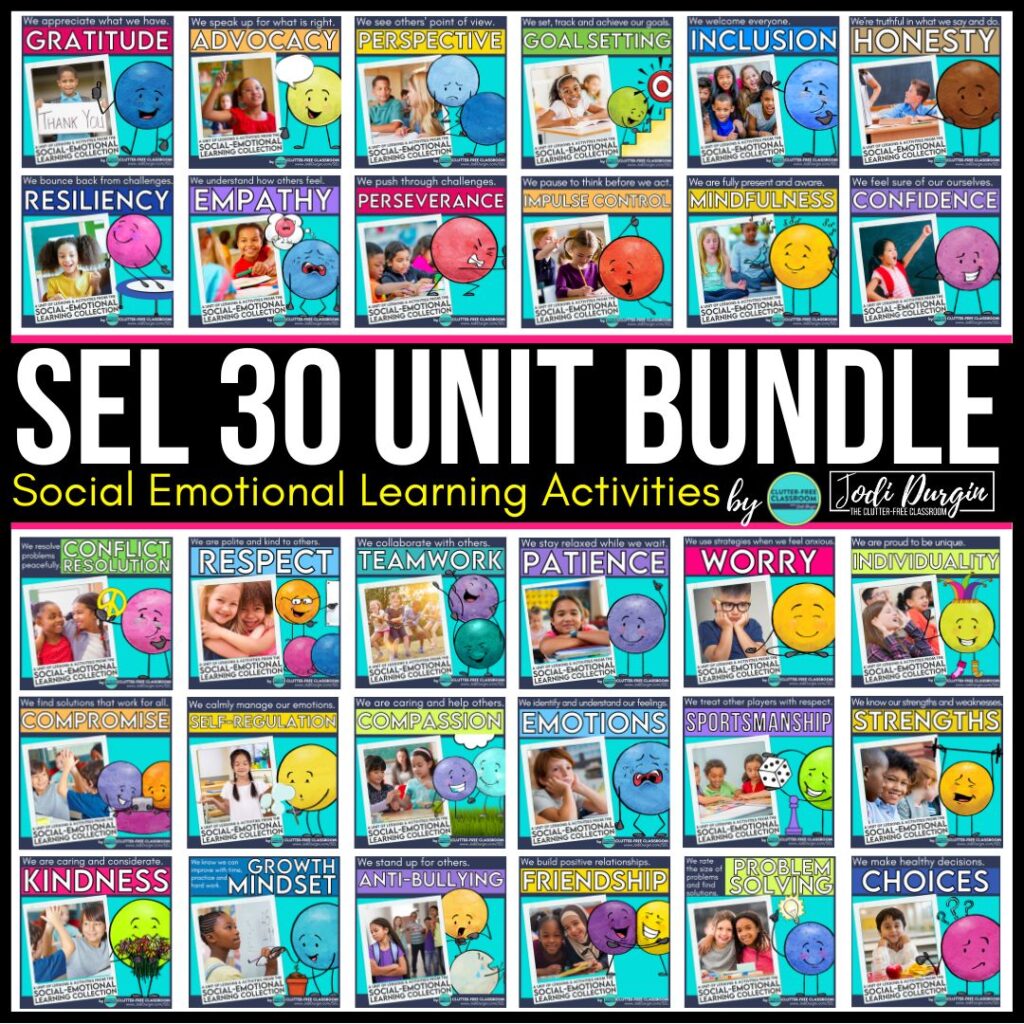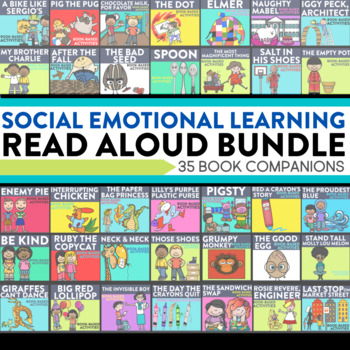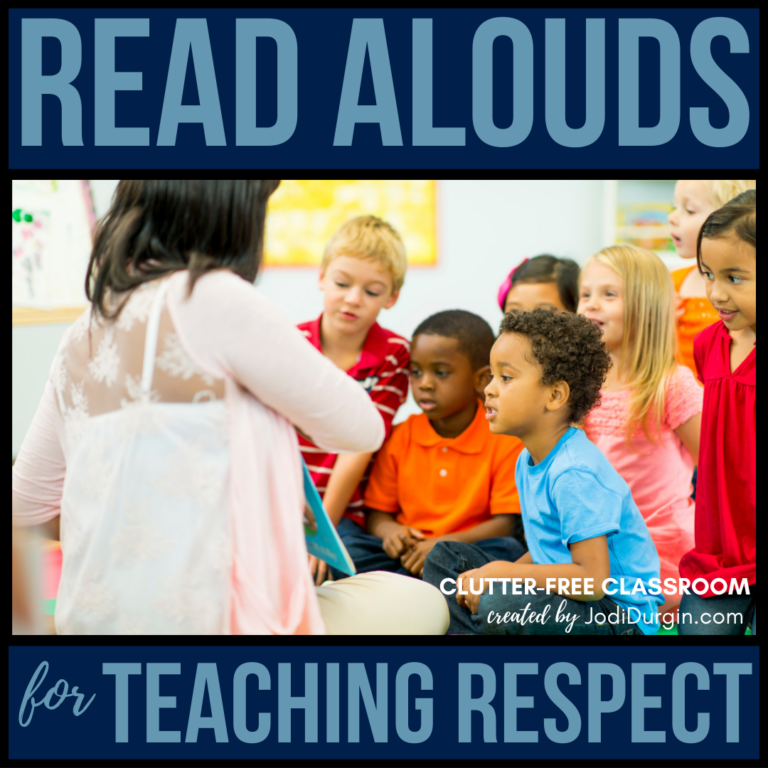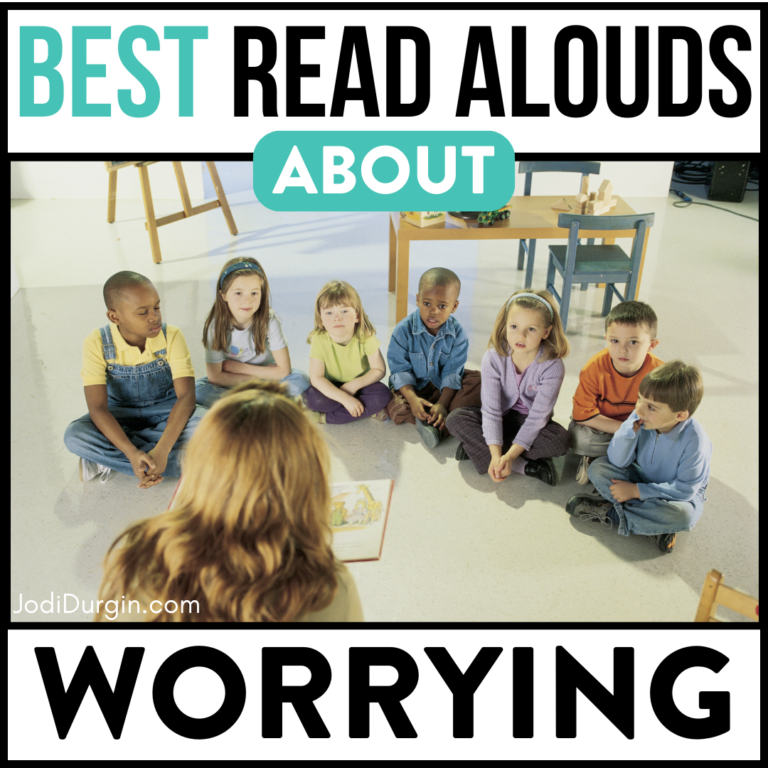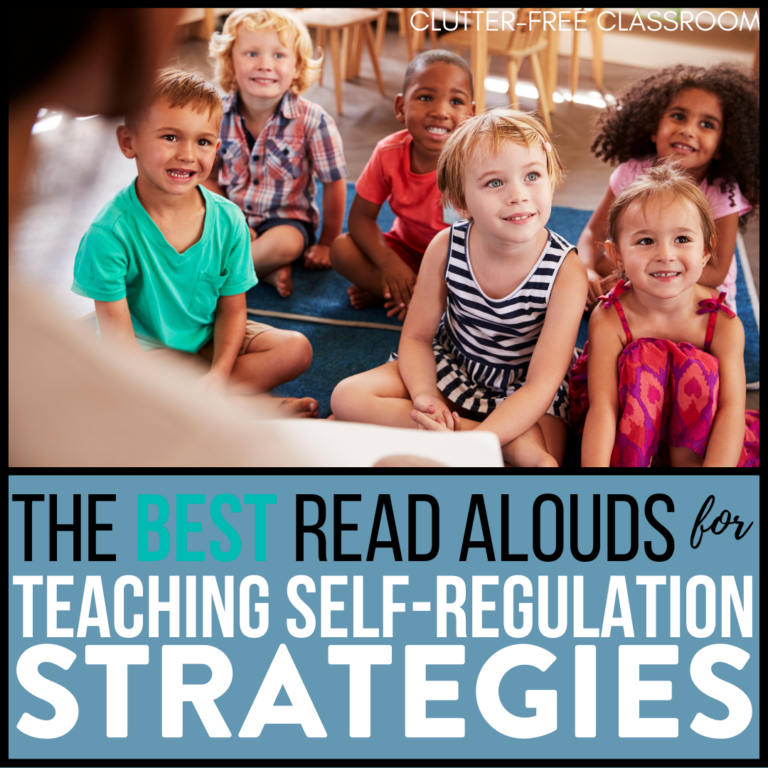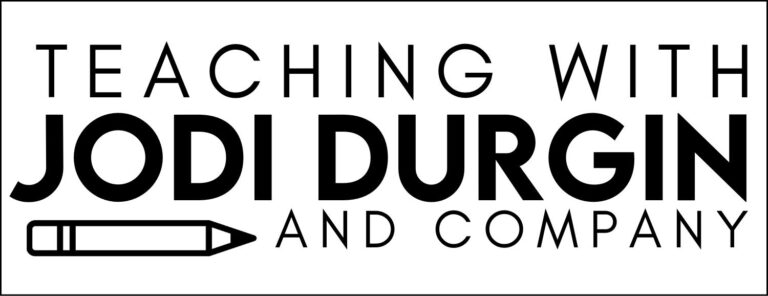Social emotional learning in schools is more important this school year than any other year before. Students need to relearn (or perhaps learn for the first time) how to behave in school and interact with classmates. As a result, it’s imperative that we, as teachers, provide direct instruction and practice opportunities for social emotional skills. Before we are able to do that, we must first understand the basics of social emotional learning in schools.
This post addresses the following questions about SEL in schools:
- What is social emotional learning in the classroom?
- How do you teach social emotional learning in the classroom?
- How do you use SEL in the classroom?
- Does social emotional learning impact learning?
- Can you share some activities that promote social development?
- What does SEL look like in a classroom setting?
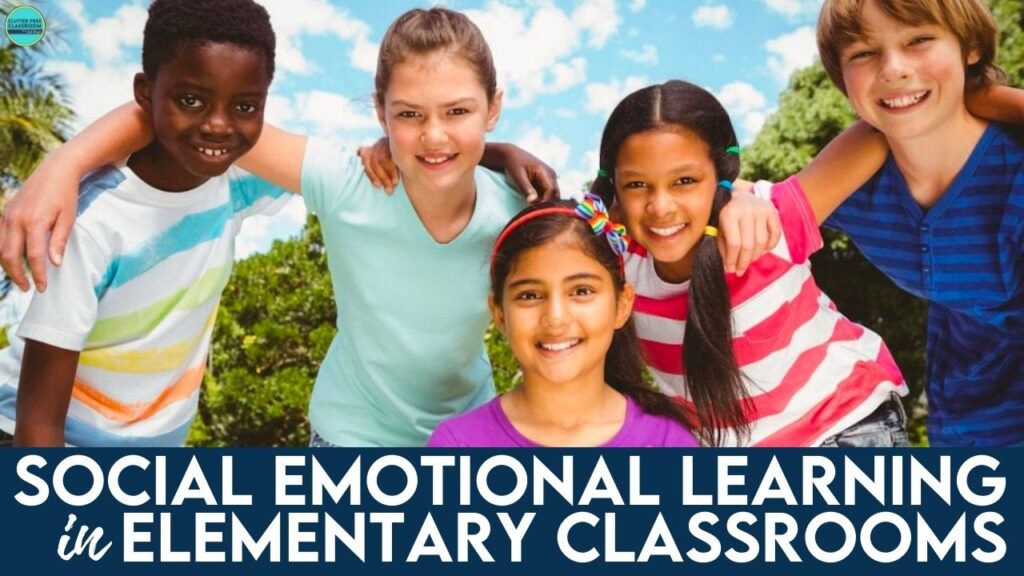
What is social emotional learning in the classroom?
Social emotional learning in the classroom is the process by which children understand and manage emotions, set and work towards positive goals, feel and show empathy for others, form and maintain positive relationships, and make responsible decisions. In the classroom, this can specifically look like students having social awareness and having understanding and compassion for others’ backgrounds, and making positive choices involving one’s behavior and emotions.
How do you teach social emotional learning in the classroom?
Modeling, role play, and read alouds are excellent ways to teach social emotional learning in the classroom.
Teachers should model feeling an emotion, identifying their emotions, and using steps to calm down their emotion.
Teachers can also create scenarios with an SEL concept for students to act out and practice with each other. For example, a scenario could be a child being upset about something a friend said. Student A can practice identifying their feelings, using steps to calm down, and using productive language to express how they feel to Student B. Student B can practice responding productively to Student A’s feelings and words.
Read alouds are an amazing and low prep way to teach SEL! They also create engaging experiences that help students remember the SEL concept you are focusing on. First, find a read aloud that matches the concept. Next, pre-read for places to stop to ask your students questions. Then, create anchor charts as you read. Last, post the anchor chart somewhere in your room for students to use when they need them. Check out our Social Emotional Read Aloud Bundle on TPT for a list of 35 books for teaching SEL. It includes resources designed for each book.
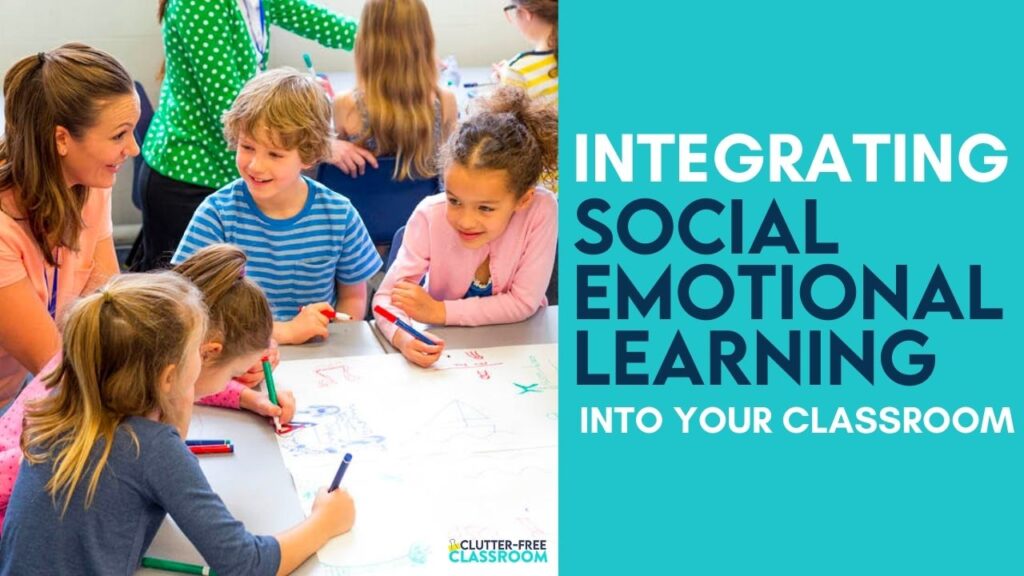
How do you use SEL in the classroom?
SEL can easily be integrated into a typical classroom day.
One idea to manageably integrate new SEL concepts in your already busy schedule is to teach a new concept at the beginning of your week, and provide mini reteaching lessons (we are talking 5 minutes max) and independent work and journal entries that support the newly learned concept.
Morning meetings lend themselves as great times to teach an SEL concept. This helps set the tone for the day and week. It is also a time when students are already used to gathering together in a less formal setting.
Read alouds are another easy way to use SEL in the classroom. Simply swap out your typical read aloud for a book that lends itself to the SEL concept you are teaching. Check out our SEL Read Aloud Bundle for a list of 35 books and resources that are excellent for teaching SEL.
Reflection papers are also a great way for students to go through the calming down process. After they have felt a big emotion and gone down the calming down steps, filling out a reflection sheet can help them process what made them feel the way they did and if they were effective in calming down and what they can do next time.
The goal of SEL in the classroom is to help students effectively and independently manage their emotions and solve problems. Modeling what this looks like and providing visuals in the room to help students is a great start to implementing SEL.
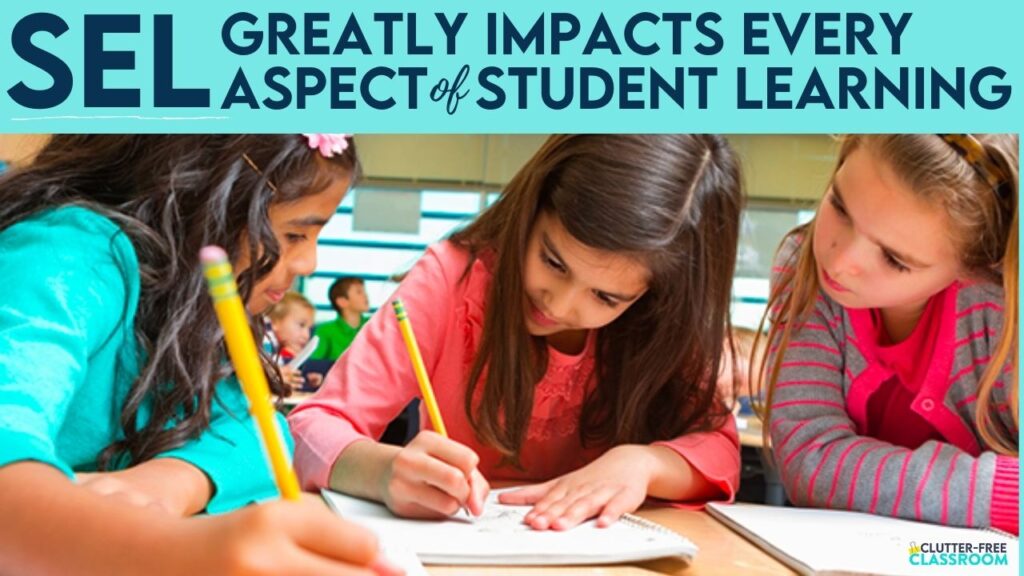
How does social emotional learning impact learning?
Social emotional learning has hugely positive impacts on learning. From being in the classroom, you know that students who are not in a place to learn are not able to learn. Students having the skills that they develop from SEL learning allows them to move from a place where they can’t learn, to a place where they are able to learn. SEL learning also supports cooperative learning because it provides students with a toolbox of strategies that they can use to work together and solve problems when they arise. Overall, social emotional learning improves students’ social-emotional skills, attitudes about themselves and others, connection to their school and classrooms, positive social behavior, academic performance, and reduces student conduct problems and emotional distress. SEL gets students in the place they need to be to do their best learning.
What activities promote social development?
There are a variety of great activities that promote social development in the classroom.
Structured games are a simple way for students to practice taking turns, navigating peer conflict, and winning and losing respectfully. Playing games like checkers or candy land are easy ways for students to practice these skills.
Learning facial expressions and identifying how people are feeling when they show these expressions helps students become socially responsible. A great exercise is to name an emotion and have children make the face that they would when feeling that emotion. Pass around a mirror so students can see how other people see their face when they are feeling that emotion. This not only helps students be socially responsive when their classmates are upset, but also helps them understand the face they are making and what people think they are feeling when they make that face. This can help students understand that, even though they might not be feeling angry, the face they are making says otherwise and that is why their friend thinks they are mad at them.
Role playing is a great way to promote social development. Students can act out teacher-created scenarios and practice the steps for managing their emotions and problem solving.
Teacher modeling is also a great way to promote social development and allows students to see that everyone feels the emotions they are feeling and that feeling big emotions is okay, it is how they respond to them that matters.
Games like Simon Says and Red Light, Green Light promote social development by fostering students’ listening skills. They have to listen carefully and focus their attention on the game in order to be successful in the game.
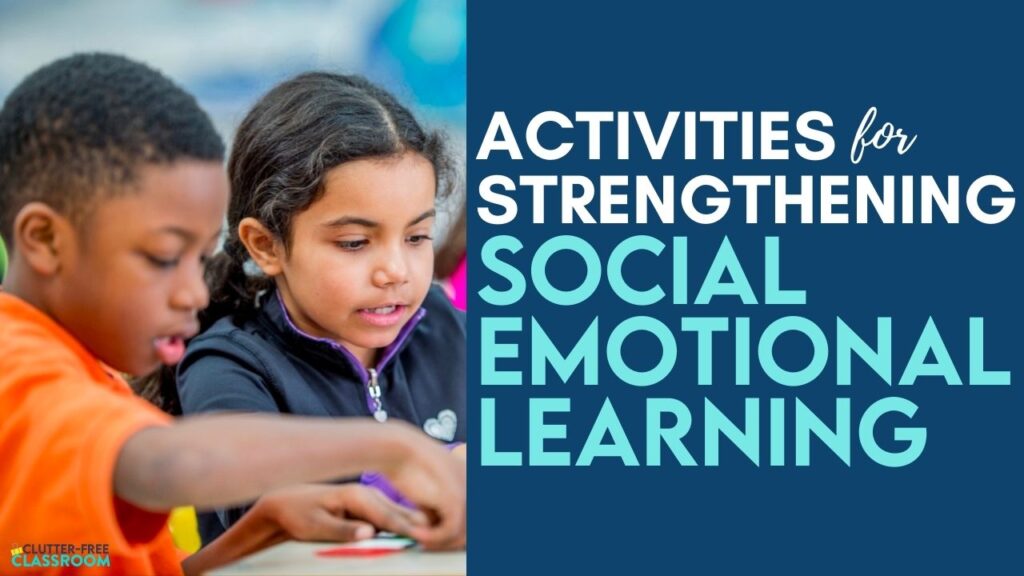
What does SEL look like in the classroom?
SEL in the classroom has many different forms. The ultimate goal of an SEL-based classroom is to foster a supportive and welcoming environment that encourages the learning and growing of students in the areas of emotion management, relationship management and problem solving. SEL instruction needs to be held to the same importance and standards as all other core subjects. If students are not competent in SEL practices, they will not be in a good place to learn. SEL in the classroom looks like students feeling emotions, managing emotions, solving problems independently and cooperatively, and working productively like peers.
Students will need explicit instruction in the different SEL concepts, and opportunities to practice the concepts learned. These opportunities can look like independent work, cooperative games, reflection sheets, or journals.
Anchor charts are an incredibly helpful resource for students to use when they come to an SEL based situation that they need to work through independently. These anchor charts also help foster SEL in the classroom and create an environment that focuses on positive SEL practices.
When a classroom is SEL focused students have greater academic success, fewer behavioral issues, less emotional distress, positive social behavior, better teacher-student relationships and connections, less bullying, and a positive classroom climate.
We hope you found this information about social emotional learning in schools helpful! If you haven’t already, be sure to check out our SEL Read Aloud Bundle. It includes tons of read aloud book suggestions, teaching ideas, student activities, and more. In addition, check out our SEL units! Each one is packed with tons of helpful resources!
SEL Book Activities
Read Alouds for SEL are the best way to teach character education and social skills in your classroom. This social emotional learning read aloud bundle contains 35 picture book companions with reading comprehension questions, writing prompts, word study, vocabulary activities and SEL lesson ideas for integrated literacy and character education. Learn more about it below!

